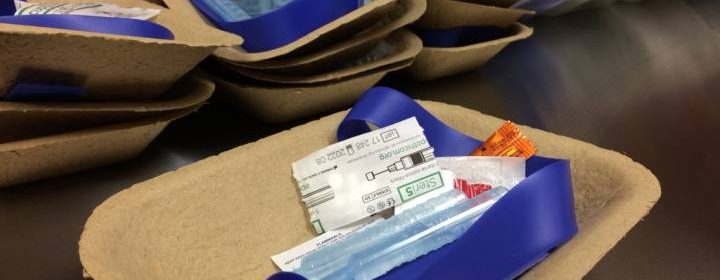‘No predictability’: Staff at London’s overdose prevention explain opioid trends

There is “no predictability” when it comes to the effects of using opiates, say staff at London’s overdose prevention site.
Sonja Burke, the director of harm reduction at Regional HIV/AIDS Connection (RHAC) where the site is embedded, says there was a recent “surge” in people who’d have stable vital signs despite entering a “very heavily sedated state.”
There were about five cases at the supervised drug-consumption site on King Street last week, but they aren’t calling it a trend, Burke explained.
“We had a surge, and then it’s gone. It’s so hard to predict.”
London police say they responded to twelve non-fatal overdose calls between April 15-21. The Ministry of Community Safety and Correctional Services confirms three of those overdose calls were for inmates at Elgin-Middlesex Detention Centre over the weekend. But the supervised consumption site isn’t reporting an increase in overdoses last week.
It’s a sign the site is working the way it should, explained Burke. It works so well that a nurse on site can identify pre-overdose symptoms and is able to supply oxygen to keep the body and vital signs working without using naloxone, she said.
Since it opened in mid-February last year, there have been no overdose deaths at the site.
Sonja Burke is the director of Counterpoint Harm Reduction Services at the Regional HIV/AIDS Connection (RHAC). The overdose prevention site is embedded in RHAC’s facility.
But who can explain why there were five overdose deaths in under a week earlier this month in the community, and no reported overdose deaths last week despite at least a dozen calls? Burke says it’s tough to understand or predict trends when it comes to the use of opioids and fentanyl because of its criminalization.
“This is the whole thing about diverted pharmaceuticals or synthetic components being added into substances. You don’t know what you’re getting,” she explained.
Before it lands in the hands of the person who uses it, opioids and fentanyl can be cut a number of times, mixed with a number of substances, and can have any degree of strength. Which is why RHAC is cautious about warning people who use drugs about a particularly coloured batch.
One month, a batch of purple fentanyl could be particularly powerful, but the next month it might be pink fentanyl that’s three times stronger, she explained.
“The colour of the substance doesn’t necessarily indicate the toxicity of it,” Burke said. “[Colour] has different meanings in different situations.”
For example, a dealer might mix Kool-Aid into their product as a marketing approach. Other times, she says “they may add [colour] in for no reason at all.”
Different batches also have a wide variety of impact on the people who use them. For example, there were a couple of days where front-line staff saw the “stereotypical” immediate overdose after people used their regular dose, explained Burke.
Another time, people would go into a delayed overdose.
“A person would use a substance, be fine, go into aftercare, be engaging in conversations with us in aftercare about whatever was happening in their life, and then go into overdose,” she said.
There was also a spate of overdoses where the muscles in people’s body became rigid and tense, making it tough to perform CPR.
“We saw that for a number of times, and then we didn’t see it [anymore.]”
The unpredictable and fast-changing trends speak to the importance of having a supervised consumption site, Burke said.
“If you’re in an alley, or you’re in a park or struggling under a bridge and you’re reacting, and you’re having a response, there’s no one there. There’s no early intervention, there’s no anticipation that this might happen, and then we lose lives.”
Sign up for our Health IQ newsletter
© 2019 Global News, a division of Corus Entertainment Inc.
Source: Read Full Article